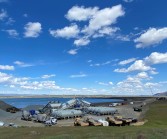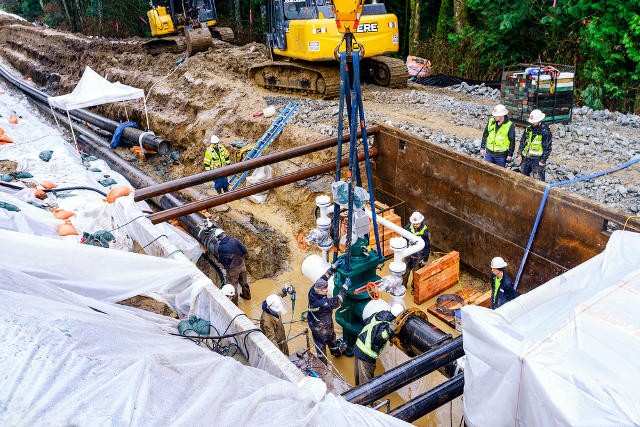$6M site restoration changing landscape near Oso mudslide
By ERIC STEVICK, The Daily Herald
- Equipment operators, archeologists and spotters — sometimes as many as 80 people — are screening about 200,000 cubic yards of debris, separating wood and waste, while looking for remains.
The small lakes from the heavy rains of March and April are gone.
There is firmness to the sun-dried ground, a much altered-terrain from the aftermath of the March 22 Oso mudslide.
Evidence of uprooted and destroyed homes that once made up the Steelhead Drive neighborhood has largely been removed.
Cars and trucks again roll by along the patched-up stretch of Highway 530.
Yet the work in the debris fields is far from over.
Contractors hired by Snohomish County are searching through the dirt once more, separating out the wood and waste, all the while looking for remains and personal belongings to return to families. Forty-three people were killed in the slide. All but one has been found.
Site restoration is a $6.4 million job of sifting through the piles created by search and recovery teams. It also means clearing portions of the county-owned Whitehorse Trail.
Crews have begun screening the estimated 200,000 cubic yards of debris on private property. That's comparable to 17,000 dump truck loads or a football field filled with dirt 100 feet high, said Janice Fahning, the county construction engineering manager monitoring the work.
Roughly 95 percent of the material is believed to be soil and wood debris.
The project involves up to 80 workers, including heavy equipment operators, archeologists and spotters.
Last week, crews wearing hard hats and orange and yellow safety vests began on the western edge of the debris. It is a delicate and nuanced process that's to be carried out over 10-hour days five days a week.
Work likely will wrap up in September, well before the rainy season, said Matthew Zybas, the county's solid waste utility director.
In May, Zybas wrote a letter to the Federal Emergency Management Agency declaring the debris fields a public health and safety threat. Most of the cleanup money will come from federal and state governments.
The wood will be ground into chips and used on the site.
Metal will be taken to a recycling center.
Personal belongings will be stored in totes to be reunited with owners or their loved ones.
Man-made debris, mostly building materials, will be taken to a certified landfill in Eastern Washington.
Soil will be used to fill holes and trenches. The wood chips will be spread on the soil.
The site will be seeded with grass and wildflowers.
“The whole goal of the project in the end is to create a stable and safe site,” Fahning said.
The workers want to be respectful as they make their way across the area, she added.
At the same time, county officials hope curiosity-seekers don't park their cars along the highway and that they stay clear of the debris fields.



